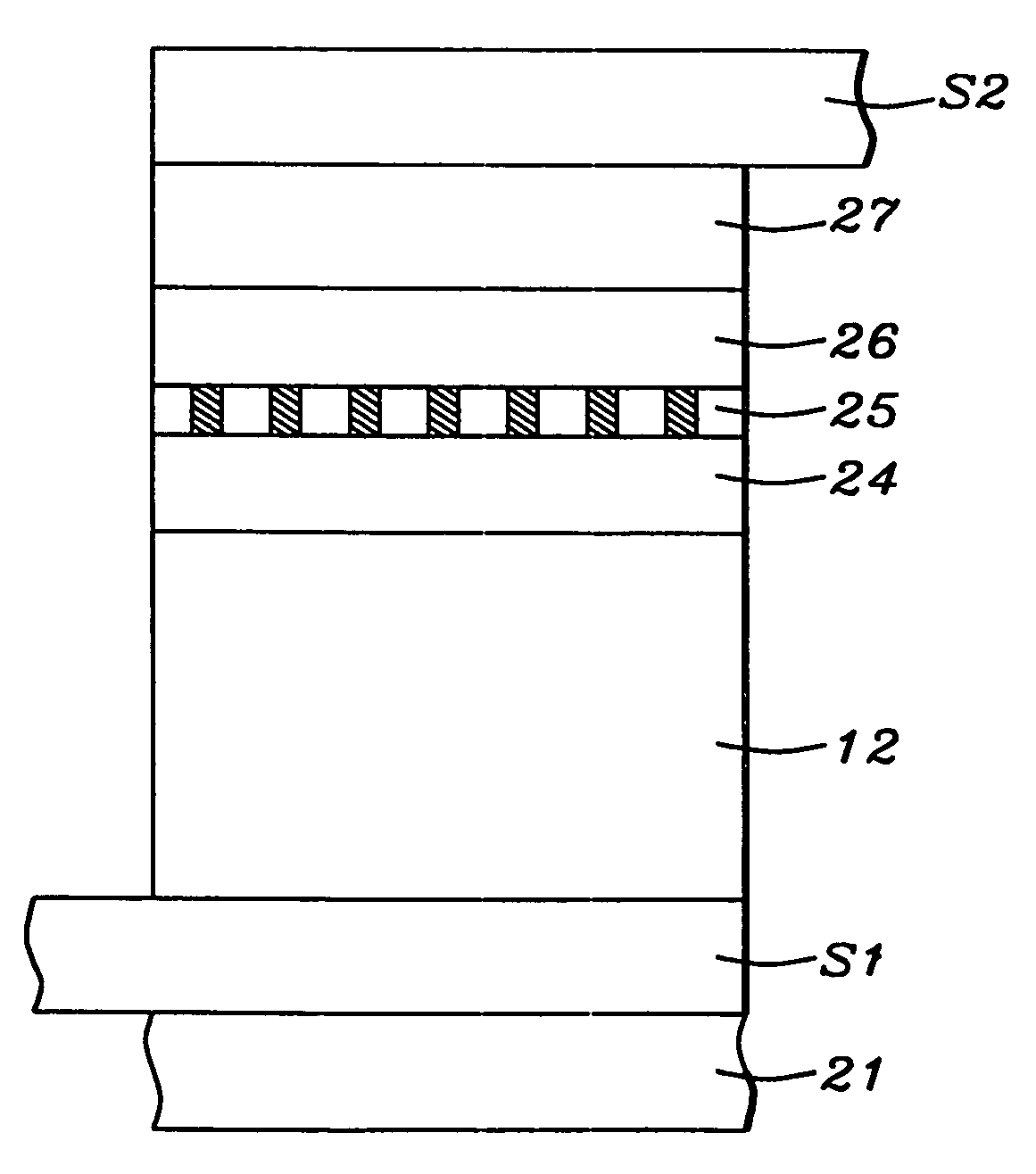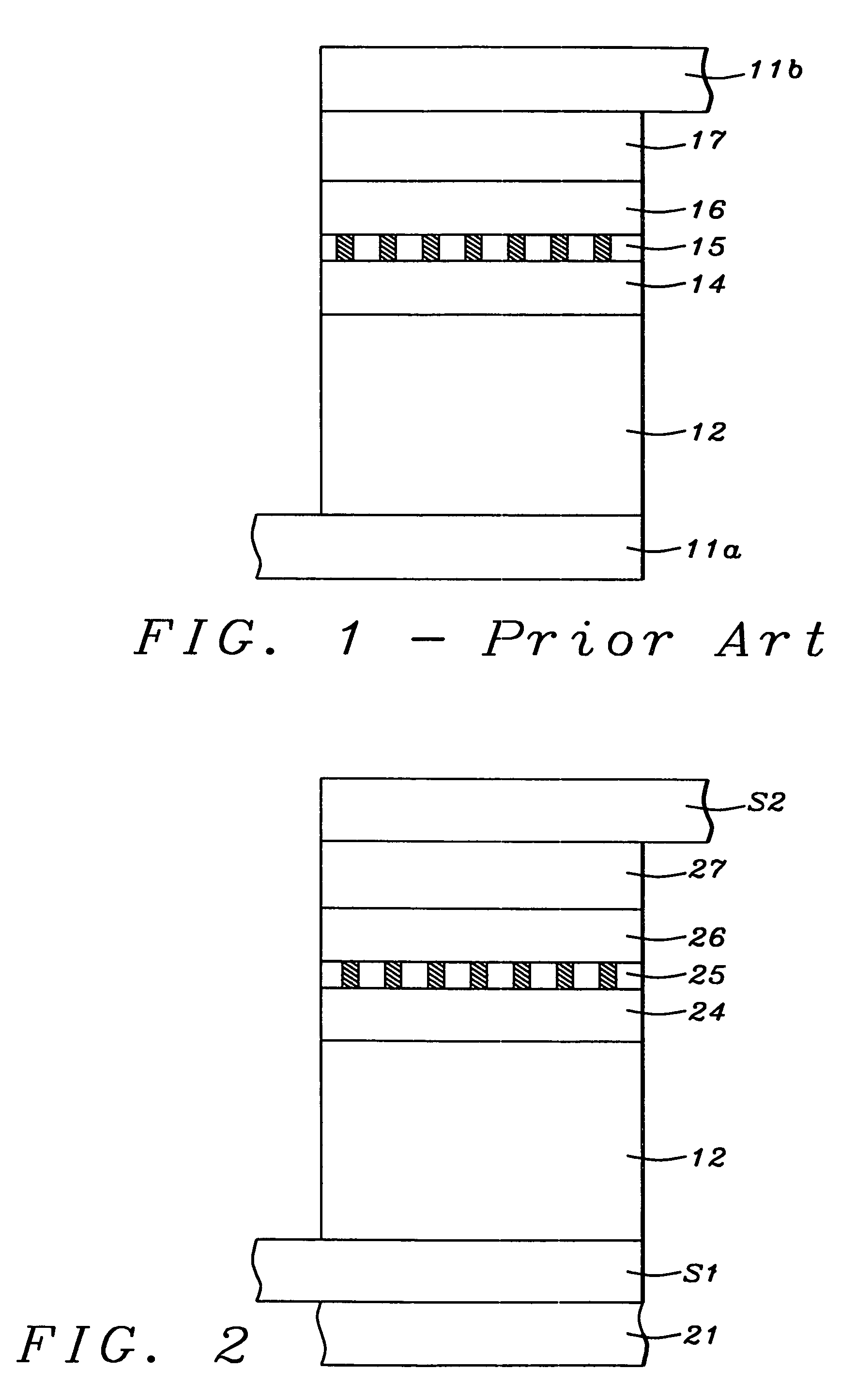Method to increase CCP-CPP GMR output by thermoelectric cooling
a thermoelectric cooling and output technology, applied in the field of memory read heads, can solve the problems of inability to operate at the same temperature as the device, inability to reduce the reliability of the device, and the spacer will be a hot spot, so as to achieve the effect of increasing the output voltage amplitude, no reliability loss, and operating at a higher power
- Summary
- Abstract
- Description
- Claims
- Application Information
AI Technical Summary
Benefits of technology
Problems solved by technology
Method used
Image
Examples
Embodiment Construction
[0021]As discussed above, in an earlier invention we disclosed a method of selecting the bottom and top lead materials so as to create a net thermoelectric potential in the CPP device whereby, for a specific current flow direction, the heat generated from Joule heating could be removed more effectively and transferred efficiently to a heat sink. In the case of a CCP-CPP device, most of the Joule heating is generated in the spacer layer, where the local current density is very high, so it becomes very important to remove heat directly from the spacer layer, not just from the GMR stack as a whole. Additionally, it may sometimes be preferable to use the same material for both the top and bottom leads, making the application of the earlier invention impossible.
[0022]Thermoelectric phenomena have been well known since the Seebeck effect observed in 1826 and followed by the discovery of the Peltier and Thomson effects. Many activities have since been carried out for material thermoelectri...
PUM
| Property | Measurement | Unit |
|---|---|---|
| thick | aaaaa | aaaaa |
| thick | aaaaa | aaaaa |
| thickness | aaaaa | aaaaa |
Abstract
Description
Claims
Application Information
 Login to View More
Login to View More - R&D
- Intellectual Property
- Life Sciences
- Materials
- Tech Scout
- Unparalleled Data Quality
- Higher Quality Content
- 60% Fewer Hallucinations
Browse by: Latest US Patents, China's latest patents, Technical Efficacy Thesaurus, Application Domain, Technology Topic, Popular Technical Reports.
© 2025 PatSnap. All rights reserved.Legal|Privacy policy|Modern Slavery Act Transparency Statement|Sitemap|About US| Contact US: help@patsnap.com


